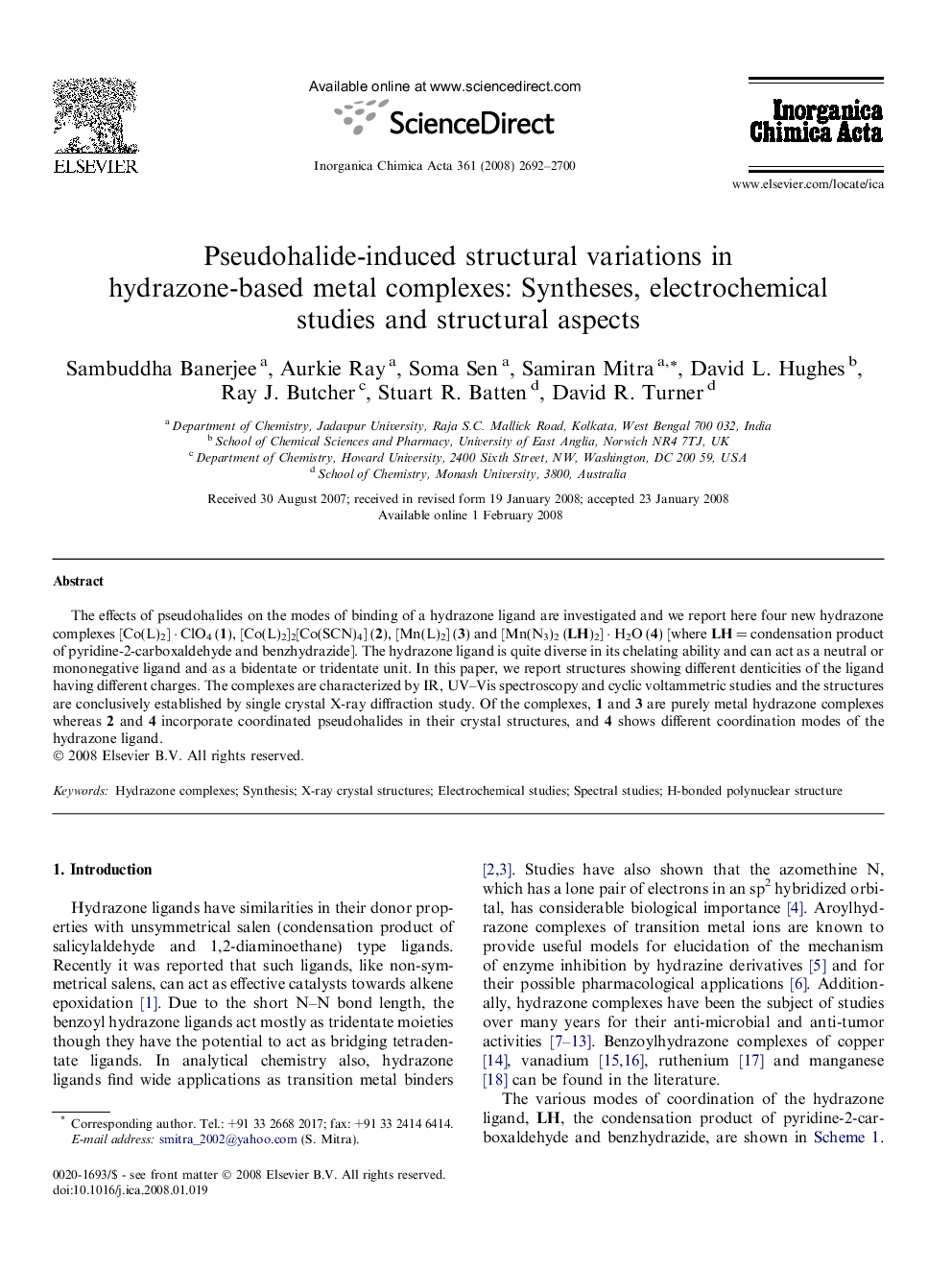| Article ID | Journal | Published Year | Pages | File Type |
|---|---|---|---|---|
| 1308996 | Inorganica Chimica Acta | 2008 | 9 Pages |
The effects of pseudohalides on the modes of binding of a hydrazone ligand are investigated and we report here four new hydrazone complexes [Co(L)2] · ClO4 (1), [Co(L)2]2[Co(SCN)4] (2), [Mn(L)2] (3) and [Mn(N3)2 (LH)2] · H2O (4) [where LH = condensation product of pyridine-2-carboxaldehyde and benzhydrazide]. The hydrazone ligand is quite diverse in its chelating ability and can act as a neutral or mononegative ligand and as a bidentate or tridentate unit. In this paper, we report structures showing different denticities of the ligand having different charges. The complexes are characterized by IR, UV–Vis spectroscopy and cyclic voltammetric studies and the structures are conclusively established by single crystal X-ray diffraction study. Of the complexes, 1 and 3 are purely metal hydrazone complexes whereas 2 and 4 incorporate coordinated pseudohalides in their crystal structures, and 4 shows different coordination modes of the hydrazone ligand.
Graphical abstractThe modes of binding of a hydrazone ligand and the structural variations brought into the structures by introducing pseudohalides are investigated in this paper and four new complexes, [Co(L)2] · ClO4 (1), [CoL2]2[Co(SCN)4] (2), [MnL2] (3) and [Mn(N3)2(LH)2] · H2O (4), are reported. In complexes 1, 2 and 3 the ligand LH has acted as tridentate mono negative ligands where as in 4 it showed neutral bidentate coordination. Complex 4 shows a very interesting ladder-like H-bonded polynuclear structure where as all the other structures are essentially mononuclear.Figure optionsDownload full-size imageDownload as PowerPoint slide
